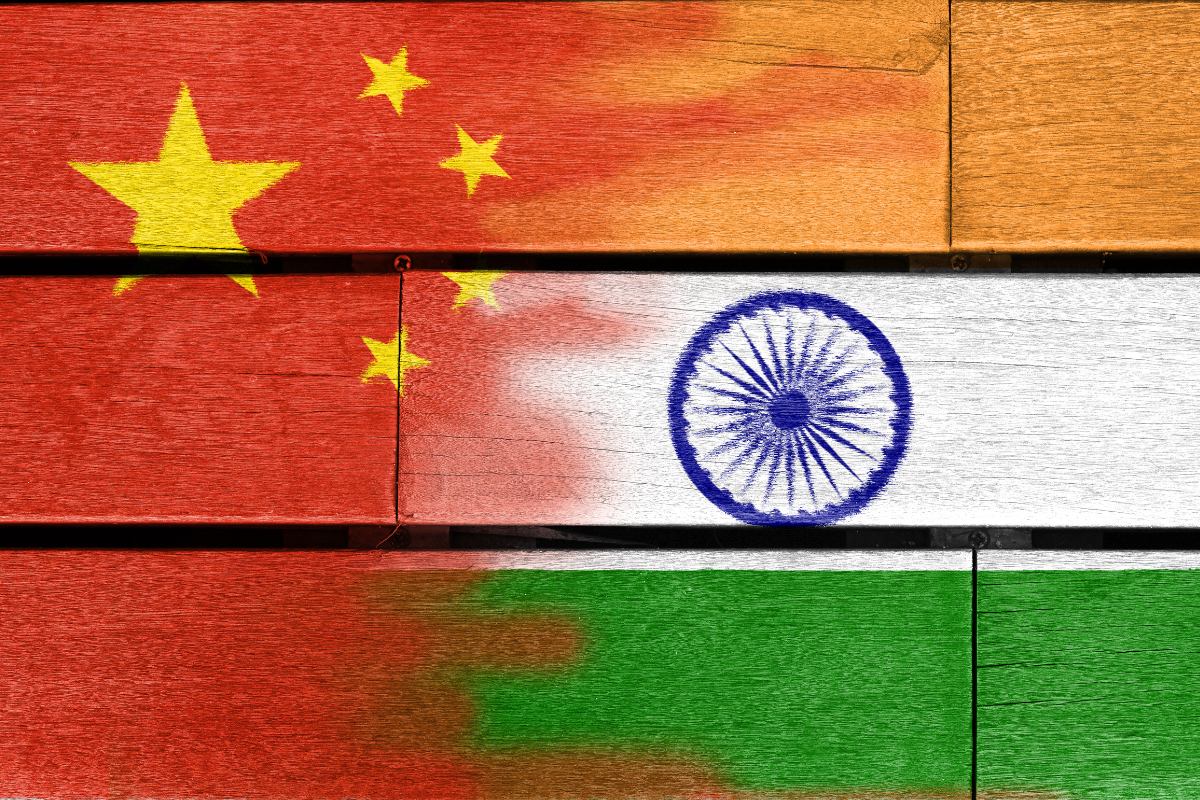India and China stand as twin pillars in Asia’s and also the global economic landscape. Both countries are expected to account for around half of global growth this year, according to the IMF. However, their divergent paths in combating inflation have recently captured global attention, painting a stark contrast in their economic trajectories.
China, the world’s second-largest economy, finds itself grappling with deflationary pressures. In July 2023, China’s consumer inflation took a dip, plummeting by 0.3% year-on-year, marking the first such decline since February 2021. Subsequently, consumer prices exhibited signs of resilience in August 2023, showing a slight rise of 0.1% year-on-year.
Most of the other economies emerged from the pandemic grappling with limited goods supply and high demand, causing inflation. However, China did not face supply bottlenecks after the removal of pandemic restrictions due to its robust domestic manufacturing capacity. Instead, the nation faced muted demand due to low investment and property woes impacting the economy. As a result, it stepped into deflation.
Deflation presents a huge challenge for China as it leads to slower growth in the country. Moreover, China is grappling with high local debt, which makes the situation worse when combined with deflation.
“We and the market were expecting this slight improvement to continue in September. Instead, the September inflation rate has fallen back to 0% YoY, and according to our calculations, this implies a small (0.1pp) decline in the underlying price level,” writes Robert Carnell, Regional Head of Research, Asia-Pacific at ING.
Furthermore, China’s Producer Price Index (PPI) witnessed a year-on-year decline of 2.5% last month, the most modest contraction since March. This figure slightly surpassed the 2.4% decrease forecasted by experts for September. The index serves as a gauge of wholesale inflation, offering insights into the overall economic well-being of the country.
In contrast, core inflation, which excludes energy and food price components, saw a 0.8% year-on-year increase, mirroring the figures observed in August. Faced with this situation, China’s central bank chose to maintain borrowing costs at their current levels earlier this month.
The People’s Bank of China announced its decision to keep the one-year loan prime rate (LPR) unchanged at 3.45% and the five-year LPR at 4.20%, with no alterations. Additionally, the one-year medium-term lending facility rate was retained at 2.5%.
“In our view, the Chinese government and the PBOC need to do more to stimulate the economy, and China needs inflation to move higher…If inflation in China starts to rise due to higher agriculture and commodity prices and looser monetary policy, we do expect a better showing for China stocks,” Mohammed Zaidi, Investment Director at Nikko AM.
Looking back, the average annual inflation rate in China hovered at approximately 1.9% in 2022, in contrast to the preceding year. According to IMF forecasts, it is anticipated that the inflation rate will decrease to around 0.7% in 2023.
India is far from deflationary worries despite a downtick in inflation
The difference in the inflation scenarios in India and China is further heightened by the fact that the South Asian nation has been consistently reporting figures over its inflation target of 4%. Erratic climate conditions, lack of adequate rainfall, and severe supply chain bottlenecks following the Russia-Ukraine conflict have led to spiraling prices in the country.
In India, food inflation surged to such heights that tomato prices surged over 200% month-on-month in July, while on an annual basis, prices of tomatoes surged 37.3%. Even global fast-food giants like McDonald’s and Burger King have taken action, removing tomatoes from some of their burgers to mitigate rising costs.
To control food inflation in India ahead of the polls next year, the government imposed export curbs on rice and yellow lentils (toor dal) since July. Earlier this year, the government also placed curbs on wheat and onion exports.
However, the tide seems to be turning, as India’s Consumer Price Index (CPI), a measure of retail inflation, has noticed a decline recently. After reaching a 15-month high of 7.44% in July, the CPI dropped to 6.83% in August.
Most notably, food and beverage inflation dropped from 9.19% in August to 6.3% in September. Core inflation followed suit, declining to 4.6% last month from 4.8% in August. Meanwhile, India’s wholesale price index (WPI) reached a six-month high of -0.26%, driven by fuel, power, and manufactured product prices. This was a far cry from the 10.55% reported a year earlier.
In terms of monetary policy, the Reserve Bank of India (RBI) decided to maintain the repo rate (benchmark interest rate) at 6.5% during its latest bi-monthly monetary policy meeting held earlier this month.
Looking ahead, the RBI’s projections for FY24 indicate an expected CPI inflation rate of 5.4%, compared to the 5.1% year-over-year projection made in its June monetary policy statement. India’s fiscal year runs from April 1 to March 31 of the following calendar year.
“Inflation remains vulnerable to rising food and fuel prices for at least the next year…We expect inflation to remain in the upper range of the RBI’s inflation target band over the entire forecast period (FY22-FY26),“ opines Deloitte.










 Australia
Australia China
China India
India Indonesia
Indonesia Japan
Japan Malaysia
Malaysia Philippines
Philippines Singapore
Singapore South Korea
South Korea Taiwan
Taiwan Thailand
Thailand Vietnam
Vietnam
 Germany
Germany Hong Kong
Hong Kong Switzerland
Switzerland Singapore
Singapore
 United Kingdom
United Kingdom







